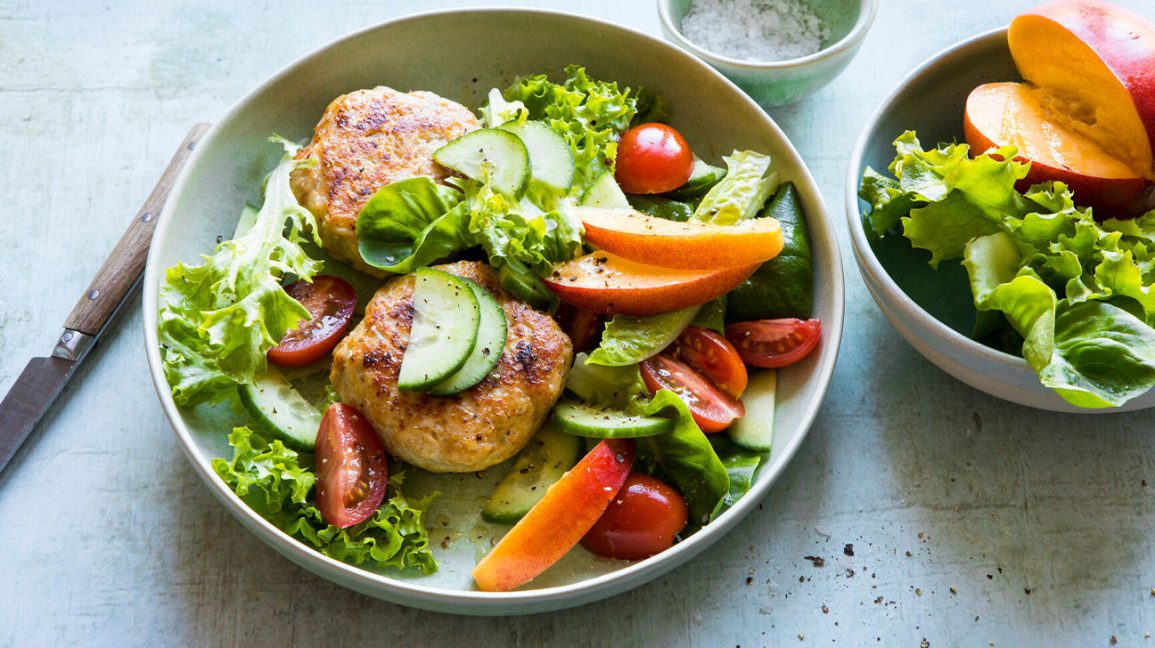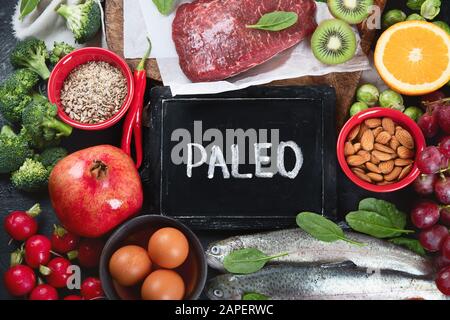
A new study suggests that heart disease is less likely to be caused by a paleo diet. Participants consumed a lot of non-starchy vegetables, and averaged 28g fiber per day. The average daily carbohydrate intake for the participants was ninety grams. Researchers concluded that their risk was increased by the lack of grains as they would not have been able to access carbohydrates in the form grains. The study recommended that they eat starchy vegetables, such as tubers, to increase their total carbohydrate intake, and reduce their resistant-starch levels.
Low-carb Paleo diet
Many myths still persist about low-carb Paleo. Many of these myths arise from old diet and nutrition myths that persist in many doctors’ offices. The low-carb diet has been shown to be effective for weight loss, but it may not be right for everyone. Before you start the Paleo diet, it is important that you do your research.
People on a paleo diet are more at risk of calcium and vitamin D deficiencies. These essential nutrients are crucial for bone health. Furthermore, consuming too much saturated fat and protein may increase the risk for heart disease, cancer and kidney disease. Paleo is safe for people who have cardiovascular disease risk. However, it can be beneficial if they eat in moderation. The Paleo low-carb diet could be the best for you.

A low-carb Paleo diet has many benefits beyond reducing inflammation. Low-carb diets are well-known for reducing blood sugar spikes as well as improving insulin sensitivity. They can improve gut health, and even prevent inflammation. But if you're looking for more information, consider reading the Low-carb Paleo diet study. To lose weight, you don’t necessarily have to be following a Paleo lifestyle.
A study conducted by Dr. Oz has concluded that carbs should make up 45-65 percent of your daily caloric intake. The result is that if you eat 2,000 calories per day, carbs will make up 900-1300 calories. This means that you will consume 225-325 grams of carbohydrates each day. That's equivalent to approximately 225-300 calories. A low-carb lifestyle, on the contrary, can contain very few carbs.
Compared to a ketogenic diet, a paleo diet is more flexible. The paleo diet encourages you to eat more fruits, vegetables, as well as lean proteins, instead of restricting carbohydrates. If you are aware of what you are eating, it will be easier to adhere to a Paleo low-carb diet. You will be less likely to get frustrated about your diet and body. You'll feel less stressed about what your eating habits are and be able to lose weight much more quickly.
High-protein Paleo diet
Paleo enthusiasts often have the same question: What is high-protein? It is important to be aware of the limitations before you attempt this diet. The upper limit for protein intake is generally 30% of total calories. It is important to remember that this is an upper limit and not an absolute. High-protein diets still require carbohydrates and fat. A higher intake of protein means that you are more likely to gain weight.

Bioavailable proteins are those that can be easily absorbed by the human body. However, animal protein is more readily absorbed than plant-based ones. Predigested beef protein is especially well absorbed. Beef protein comes from hormone-free, antibiotic free cows in Sweden. Hydrolyzed beef is easier to digest.
Cost is one reason people have difficulty sticking to a study plan. It is more expensive to eat protein than carbs and fat. It can be difficult to stick to a diet due to the social aspects involved, such as not liking to be seen in restaurants. It is possible to save money on Paleo while still eating well. There are many ways you can manage your cravings without eating out. You don't have to feel guilty if you want to stay on the right track. You can find more information about these topics on the index page.
The high-protein and low-carbohydrate portions of the paleo diet have numerous health benefits. Although the diet's lower sugar and carbohydrate levels may lead to an increase in insulin sensitivity and better glycemic control (although these effects are not statistically significant), Studying blood pressure levels found statistically significant drops in diastolic blood Pressure among participants on the paleo diet. The studies involved nine to 29 participants over a 10-day period. They also included a 12-week follow-up.
FAQ
What is the cost to study culinary arts?
There are many factors that influence the cost of learning culinary arts. For example, a four-year degree typically costs around $40,000. A two-year associate degree, on the other hand may cost less than $5,000. Tuition rates depend on the type of program you select. Private institutions charge higher prices than public ones.
How Can I Get Hired As a Cook?
It is possible to get a job in the kitchen by word of mouth. Friends and family might know of a restaurant in need of additional staff. There are often openings posted on websites and bulletin boards.
How can I learn how to cook like a professional chef?
Cooking is one way to be a better cook. Being able to cook healthy food is a great skill to improve self-confidence. You can learn to cook at home if your goal is to become a good cook. It is important to discover what type of recipes you enjoy. Read books about various foods such as Chinese, Mexican, and Italian. Finally, you can practice cooking different dishes until your skills are perfect.
What skills is required to attend culinary school
You will need to know how to cook, understand food safety regulations, and be able work under pressure in order to become a chef. For a basic understanding of cooking, it is advisable to enroll in cooking classes at the local high schools or community colleges. Once you have mastered the basics of cooking, you will need to find work in a restaurant and catering company.
Do I have to go to culinary school in order to be a professional chef?
No. Many chefs started their careers by learning on their own. Some even went on to culinary school to gain work experience. Many chefs prefer to attend culinary school for the increased opportunities to learn and grow as professionals. Culinary schools allow students to learn hands-on skills, and this helps them improve their cooking knowledge.
Is there a better way to learn to make delicious meals?
Cooking should be something everyone can do. If you don't know how to cook, you miss out on some great food experiences. To learn how to cook, you must first find a recipe you like and then follow it carefully. Next, practice making small changes until you are comfortable cooking the dish. Try cooking for others. This will improve your cooking skills as well as test your culinary abilities.
What are some of the benefits of using slow cookers?
Slow cookers are extremely useful as they make it easy to cook delicious meals in a short time. Slow cooker recipes often have a lower oil and fat content than traditional recipes. Because they cook for you while you sleep, slow cooker recipes can be convenient.
Statistics
- under 10 Kids have been taught that there is special food just for them, and Fiese says that 10 percent of kids will throw a tantrum if they don't get the food they want. (washingtonpost.com)
- According to the BLS, chefs earn $58,740 a year. (learnhowtobecome.org)
- On average, chefs earn $58,740 a year, according to the BLS. - learnhowtobecome.org
External Links
How To
How to make an omelet that is perfect
Omelets are a favorite breakfast food of mine. But how do you make them perfectly? I have tried many different recipes and methods, but none of them work. So I wanted to share some tips and tricks so that you can make delicious, fluffy omelets every morn.
It is important to know that eggs can be temperamental when making omelets. You must get them fresh, organically, and keep them cold until you cook. If they are not kept cold enough, the whites won’t form properly. The yolks will also break down too quickly and become runny. Your omelets will look strangely colored if this happens. It is best to use room-temperature eggs if you are going to cook them right away.
You might also try separating the egg before adding to the pan. Because this could cause your omelet to become curdled, you don't want any yolk to be mixed with any white.
The bottom part of an egg that is added directly to the stovetop might be burned, which could cause a ruined texture in your omelet. Instead, put the egg in the microwave for 10 seconds before putting it into the pan. The microwave heat cooks the eggs just right without overcooking them.
Next, let's discuss mixing the eggs. You want to mix the eggs thoroughly before you add them. Turn the bowl upside down and grab the whisk to do this. Now shake the bowl vigorously. The egg will be thoroughly mixed in the bowl as the air is whipped.
The fun part begins - you need to pour the milk into your mixture. Pour half the milk into the beaten egg mixture and then fold in the eggs. You don't need to worry if streaks remain. They will disappear once you flip your omelet.
After folding the eggs fold the pan onto medium heat. When the oil starts to hot, wait for the pan to cook. Once the oil starts getting hot, add 1/4 cup of butter to the pan and swirl it around to coat the entire surface of the pan. Now carefully crack open the lid of the pan and sprinkle salt into the pan. Salt will prevent the omelet sticking to the pan.
Once the omelet has formed, cover the pan again and wait for the top side to set completely. Flip the omelet with a spatula, or flip it upside down. Cook the other half for another minute. Serve immediately after removing the omelet from its pan.
This recipe is best made with whole milk. However, it can also be used with skimmed milk.